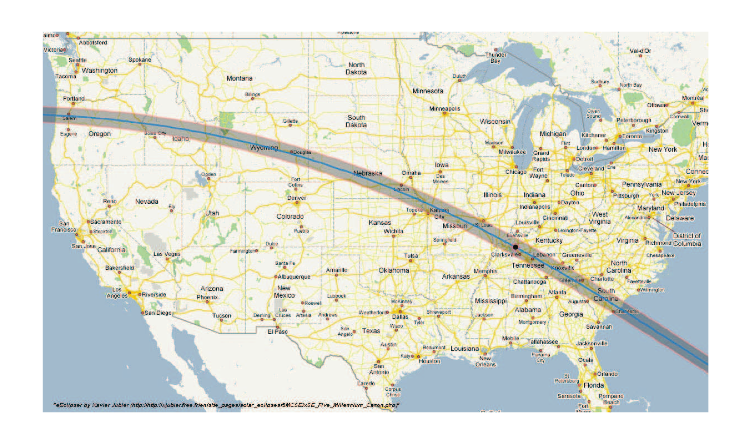Humanity’s dependence on electricity has been cast into further relief by the global COVID-19 pandemic. It is impossible to imagine modern life without it, lacking everything from lights to the internet. What would happen if that all disappeared over night? If all of our electrical grids failed essentially simultaneously? This is more than the setting of a dystopian novel: it is a real possibility. A large geomagnetic storm triggered by the sun could blow out the transformers that are an essential component of our electrical grids. And it’s happened before.
The Physics
The sun lets out a constant stream of charged particles known as the solar wind. Earth is largely protected from this wind by its internally generated magnetic field. The magnetic field creates a kind of bubble around the Earth known as the magnetosphere. The magnetosphere protects us from the dangerous solar radiation and keeps our atmosphere from being taken away with the wind. At the magnetic poles, some of the solar wind material can make its way into the Earth’s atmosphere. This is what causes aurora, and why they can usually only be seen around the North and South Magnetic Poles.
Occasionally, the sun can release stronger spurts of energy known as coronal mass ejections (CMEs). These ejections can throw out billions of tons of material from the extended atmosphere of the sun, the solar corona, and send them hurtling through space at incredible speeds – occasionally in our direction. They can take anywhere from several days to only 15 hours to reach us. The largest CMEs result from the relaxing of highly twisted magnetic field lines, often accompanied by a solar flare. They usually occur near areas with heavy sunspot activity and are most likely when the sun’s activity is at a peak known as the solar maximum in the solar cycle.
The History
The sun was at a solar maximum in 1859, when electricity was not yet widespread and was mostly used with telegraph systems. Richard Carrington was observing sunspots on a projected image of the sun on the morning of September 1 when he noticed two incredibly bright spots of light.
Fig 1: The sunspots and solar flares (labeled A and B) observed by Richard Carrington in 1859. Source: MNRAS
Very early the next morning aurora lit up the night sky, stretching as far south as the Carribean in the Northern Hemisphere. The further north, the brighter the aurora appeared, waking gold miners in the Rocky Mountains and providing enough light to read by in the Northeast United States. The telegraph systems in Europe and North America failed and some telegraph operators even received strong shocks.
The event was caused by the largest CME in recorded history. The bright spots of light Carrington observed were solar flares that accompanied the ejection. Hours later, the CME reached the Earth and the quickly moving charged particles broke through the magnetosphere and entered the atmosphere, causing the brilliant aurora that were observed throughout the world. Those charged particles barreled down the telegraph lines and shocked the operators when they reached the end.
What if it happened today?
Our electrical grids today are incredibly more complex than the telegraph systems of 1859. The exact outcome of a similar event of the same magnitude is impossible to say. The closest event we can compare it to is the geomagnetic storms of 1989, which was a year of strong solar activity. In March 1989, the province of Quebec (which is close to the North Geomagnetic Pole) lost electricity for 9 hours after a storm tripped the circuit breakers. But that event was significantly smaller than the one in 1859.
An event of that size or larger could blow out transformers, essential parts of the electrical grid, leaving many without power. Depending exactly where the storm hits hardest, how well the grid is protected against flares and how many spare transformers are readily available, the power outage could last from 16 days to a couple of years and the cost to the U.S. alone could amount to $0.6 – $2.6 trillion.
Fig 2: A model of the relative strength of electric fields caused by another Carrington-level event. The purple shading indicates areas with larger electric fields which would be hit harder by a storm. The worst effects are seen on the Atlantic coast and Canada, due in part to their proximity to the North Geomagnetic Pole.(Source: a risk report by Lloyd’s.)
Another Carrington-level event is inevitable. Auroral records can be used to measure the historic size of past storms. They indicate that storms like the one that hit Quebec happen roughly every 50 years, while Carrington-level events occur roughly every 150 years. It’s been 162 years since 1858 but we don’t need to panic just yet. The sun, which operates on an 11 year cycle, just had a solar minimum a year ago in April 2019. The next solar maximum, the period of highest activity, won’t occur until sometime in 2023-2026 and some maximums are weaker than others.
After the 1989 storm that hit Quebec, the province prepared by upgrading their electrical infrastructure at a high upfront cost, but with the knowledge that it would save money when another storm hits. The U.S. is not similarly prepared. As of 2002, fifteen percent of large power transformers still in use were made pre-1972 (when significant robustness was introduced to transformers),. Even modern transformers are not necessarily equipped to deal with a Carrington-level event and there is no federal reserve of transformers, as that was deemed too costly in a 2017 U.S. Department of Energy report. Power companies have their own reserves, but exact numbers and locations of those reserves is considered proprietary information. Instead of a federal reserve, the report urged the government to create an independent assessment of the reliability of critical transformers and work with the industry to come up with plans in the case of major outages. It is unclear if this has happened.





We Amateur Radio operators (Hams) are looking forward to Cycle 25 in the coming years.
Is there the risk electrical wires or equipment would be set on fire? I heard telegraph wires were set on fire at the Carrington event.
Yes, there is a high chance many of the electrical failures would start fires.
Would a Carrington-type event affect rooftop solar panels? Would only those solar panels that were connected to the power grid suffer collateral damage?